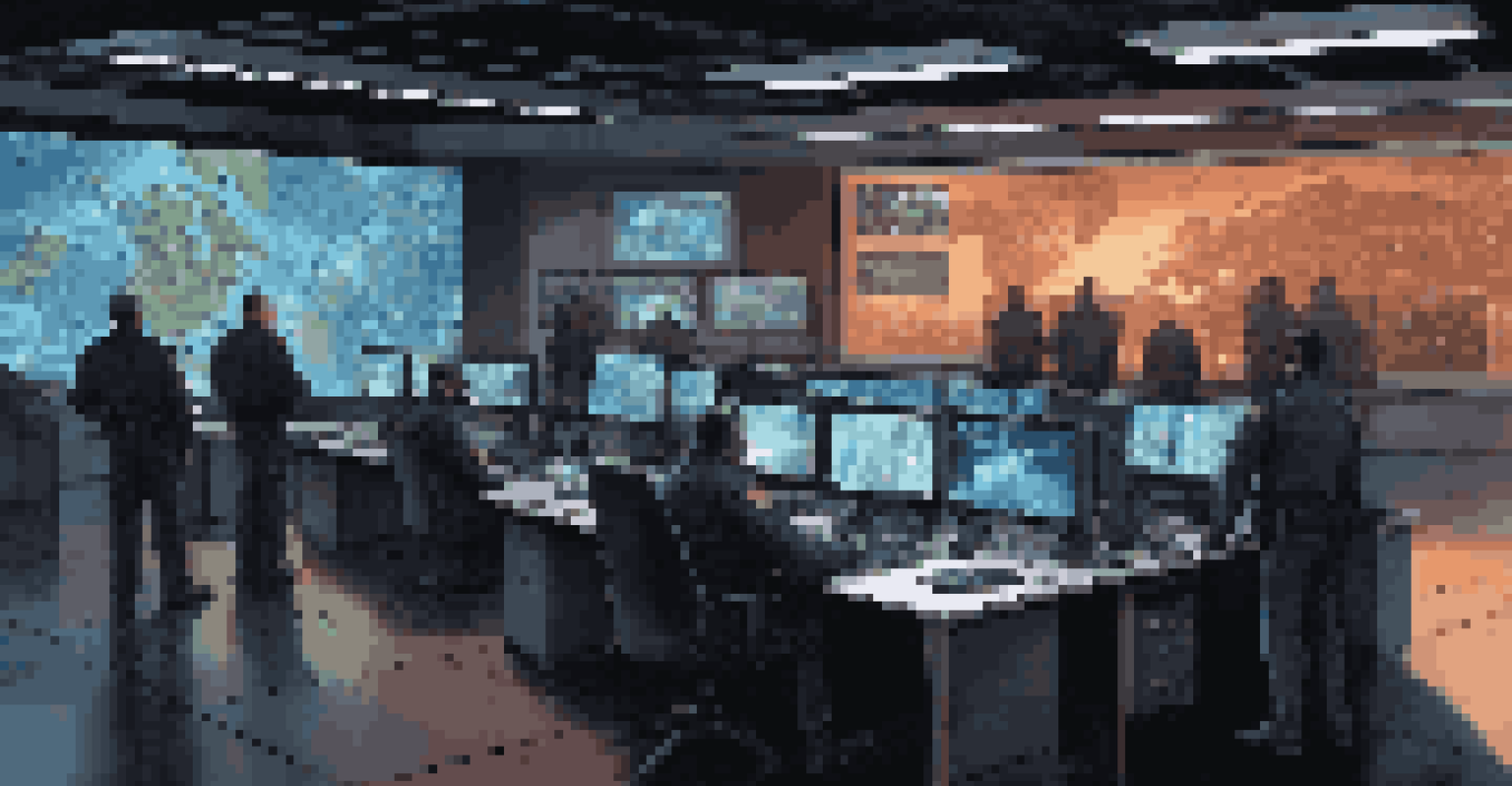Understanding the Dark Web: Risks and Security Implications

What is the Dark Web and How Does it Function?
The dark web is a part of the internet that isn't indexed by traditional search engines, making it elusive and often misunderstood. It operates on encrypted networks and requires specific software, such as Tor, to access. This hidden layer of the internet is not inherently illegal but is often associated with illicit activities.
The dark web is a place where the rules of the internet don’t apply, and it can be both a refuge and a danger.
To visualize it, think of the internet as an iceberg. The surface web is the tip, easily visible and accessible, while the dark web lies beneath the water, hidden and mysterious. This structure means that while there are legitimate uses for the dark web, such as protecting privacy, it also attracts individuals with nefarious intentions.
Understanding how the dark web functions is crucial for recognizing the risks involved. It can be a double-edged sword; knowledge can empower you to navigate safely, but ignorance might lead you into dangerous waters.
Common Misconceptions About the Dark Web
Many people associate the dark web solely with illegal activities, but this is a misconception. While it is true that some parts of the dark web host illegal marketplaces and forums, many individuals use it for legitimate reasons, such as safeguarding their privacy in oppressive regimes. This nuance is critical to understanding the dark web's true nature.

For instance, whistleblowers and journalists often rely on the dark web to communicate securely without fear of surveillance or retaliation. This duality illustrates that while it has a dark side, it also serves vital purposes for those needing anonymity and protection.
Understanding the Dark Web's Nature
The dark web is a hidden part of the internet that serves both legitimate and illicit purposes, requiring specific tools for access.
Clearing up these misconceptions can help you approach the topic with a more informed perspective, allowing for a balanced view that acknowledges both the risks and the legitimate uses of the dark web.
The Risks of Exploring the Dark Web
Venturing into the dark web can expose users to various risks, from malware infections to legal repercussions. Malicious actors often populate these spaces, and simply clicking on the wrong link can lead to harmful software infiltrating your device. This is why maintaining robust security measures is essential if one chooses to explore.
The only thing necessary for the triumph of evil is for good men to do nothing.
Moreover, the legal landscape surrounding the dark web is murky. While merely accessing it isn't illegal, engaging in activities like purchasing illegal goods can lead to severe consequences. This gray area adds an additional layer of risk for unsuspecting users.
Understanding these risks is vital to making informed decisions about your online behavior. Awareness of potential dangers can help you navigate safely and avoid common pitfalls.
How to Protect Yourself When Browsing the Dark Web
If you decide to venture into the dark web, taking protective measures is crucial. First and foremost, use a reliable VPN to anonymize your internet traffic, making it harder for others to track your online activities. This is akin to wearing a disguise in a crowded room; it helps keep your identity safe.
Additionally, consider using an operating system designed for privacy, like Tails, which runs from a USB stick and leaves no trace on your computer. This heightened level of security can significantly reduce risks while browsing.
Navigating Risks and Scams
Exploring the dark web involves various risks, including malware and scams, necessitating heightened security measures.
Ultimately, being proactive about your online safety can empower you to explore the dark web more securely. Knowledge and preparation are your best allies in this shadowy corner of the internet.
Recognizing and Avoiding Scams on the Dark Web
Scams are rampant on the dark web, often preying on unsuspecting users. From fake marketplaces to phishing schemes, these scams can lead to financial loss or compromised personal information. Being able to recognize red flags is essential for anyone exploring this hidden web.
One common tactic involves sellers who advertise illicit items at enticing prices but never deliver. These scams can be quite sophisticated, making it difficult for users to determine who to trust. Always remember the saying: if it sounds too good to be true, it probably is.
By staying vigilant and cautious, you can protect yourself from falling victim to these scams. Educating yourself about common tactics used by scammers is a key step in navigating the dark web safely.
The Role of Law Enforcement on the Dark Web
Law enforcement agencies are increasingly active on the dark web, working to combat illegal activities. They monitor and investigate these hidden spaces to track down criminals involved in drug trafficking, human trafficking, and other illicit enterprises. This cat-and-mouse game highlights the ongoing battle between law enforcement and those who operate in the shadows.
For example, operations like Silk Road's takedown demonstrate the effectiveness of law enforcement efforts. These high-profile arrests send a message that illegal activities on the dark web won't go unnoticed, which can deter potential offenders.
Law Enforcement's Role
Law enforcement actively monitors the dark web to combat illegal activities, creating a dynamic environment for users.
This dynamic between criminals and law enforcement adds an extra layer of complexity for users. Awareness of this ongoing struggle can encourage a more cautious approach to browsing the dark web.
The Future of the Dark Web: Trends to Watch
As technology evolves, so does the dark web, with emerging trends that could shape its future. For instance, the rise of cryptocurrency has made transactions on the dark web more anonymous, facilitating illicit activities while also enabling privacy-focused users to operate safely. This evolving landscape presents both opportunities and challenges.
Additionally, advancements in cybersecurity measures are likely to impact the dark web. As users become more aware of risks and adopt better security practices, malicious actors may need to adapt their tactics. This ongoing evolution can create a continuous cycle of cat-and-mouse between users and threat actors.

Staying informed about these trends can help users navigate the dark web more effectively. Awareness of the shifting landscape can empower you to make better choices regarding your online activities.